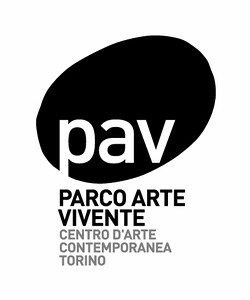Politics of Disaster
Gender, Environment, Religion
March 6–May 31, 2020
Via Giordano Bruno 31
10134 Turin
Italy
T +39 011 318 2235
Curated by Marco Scotini
The PAV, Parco Arte Vivente, is pleased to present Politics of Disaster. Gender, Environment, Religion, the first Italian, solo exhibition dedicated to one of the most iconic and well-known artists from Indonesia. Nonconformist, blasphemous and transgressive: are some of the expressions often used to describe Arahmaiani due to her radicalism and meddling in subjects bordering on the political. The exhibition, curated by Marco Scotini, focuses on another key figure from Southeast Asia context, in the specific relationship between environmental exploitation and oppressed subjects, women and minorities.
The international career of Arahmaiani (born in Bandung 1961, lives in Yogyakarta) received pioneering recognition back in the 1990s: invited by Apinan Poshyananda to participate in the seminal exhibition Tradition/Tensions, at the New York Asia Society (1996); one of the 100 international artists present in the famous “exhibition-in-a-book” Fresh Cream (2000); through to the 50th Venice Biennale where she represented the Indonesian Pavilion (2003). In 2007, she participated in Global Feminism, the first transnational collection on gender at the Brooklyn Museum.
Arahmaiani’s approach to feminism is based on the opposing principles of tension and “the balance between female and male energies”, in which all aspects of life are interconnected. Her 30 years of research tackle subjects such as gender and religion, the battles for social justice and ecology as fundamental parameters for the criticism of bio-power within the profoundly patriarchal Indonesian society.
“What became the focus of my attention were the situations, the forces that ‘move the body,’” the artist wrote in 1993 in relation to her performative activities. As Angela Dimitrakaki has pointed out, this claim becomes more substantiated when one considered Arahmaiani’s work as a whole—her attention to specific, historic events, to the passage of history as such is unquestionable. This history is often emphasized as the history of “disasters”: disasters of gender, politics, ecology and in relation to which (rather than as a consequence—going on with Dimitrakaki) Arahmaiani creates like a “nomadic dreamer.”
From the outset, she was drawn to an artistic practice orientated towards a performative approach as a form of political activism. As a result of her controversial street performance Independence Day (1983) she was arrested and her historic exhibitions such as “Sex, Religion and Coca Cola” (1994) and “Sacred Coke” (1995), generated negative reactions and even death threats, as gender and religion were, and remain, taboo issues in a nation that suffered religious sectarianism and political repression up until the fall of the Suharto regime.
Since 2010, her work has concentrated on environmental issues, beginning with the highlands of the Tibetan region where she collaborated with a community of Buddhist monks and the inhabitants of local villages in order to promote environmental conservation. Politics of Disaster opens with this participative project at the center of the exhibition space: Memory of Nature (2013) making use of the form of the Borobudur temple in Java, is a contemplative and meditational work that highlights the value systems that motivate us to respect Nature. During the opening, Arahmaiani herself will start the work with a performance based on the metaphor of taking care of the world like a garden.
Her work, close to the women’s movement in Indonesia, is close to the position of Marxist feminism: the struggle for women’s liberation cannot be other than a class struggle.
Arahmaiani’s work has been widely exhibited in museums and biennials throughout the world, from Asia to the United States, in Australia and Europe: the Biennial of the Moving Image, Geneva (2003); the Gwangju Biennial (2002); the São Paulo Biennial (2002); the Performance Biennial, Israel (2001); the Lione Biennial (2000); the Werkleitz Biennale (2000); the Bienal de la Habana (1997); the Asia Pacific Triennial (1996); and the Yogya Biennial, (1994).
The exhibition has been staged with the support of Compagnia di San Paolo, Fondazione CRT, Regione Piemonte and City of Turin.



